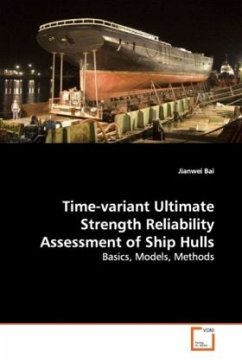
Strength of Ships
Versandkostenfrei!
Versandfertig in 6-10 Tagen
23,99 €
inkl. MwSt.

PAYBACK Punkte
12 °P sammeln!
High Quality Content by WIKIPEDIA articles! High Quality Content by WIKIPEDIA articles! The strength of ships is a topic of key interest to naval architects and shipbuilders. Ships which are built too strong are heavy, slow, and cost extra money to build and operate since they weigh more, whilst ships which are built too weakly suffer from minor hull damage and in some extreme cases catastrophic failure and sinking. The hulls of ships are subjected to a number of loads. Even when sitting at dockside or at anchor, the pressure of surrounding water displaced by the ship presses in on its hull. T...
High Quality Content by WIKIPEDIA articles! High Quality Content by WIKIPEDIA articles! The strength of ships is a topic of key interest to naval architects and shipbuilders. Ships which are built too strong are heavy, slow, and cost extra money to build and operate since they weigh more, whilst ships which are built too weakly suffer from minor hull damage and in some extreme cases catastrophic failure and sinking. The hulls of ships are subjected to a number of loads. Even when sitting at dockside or at anchor, the pressure of surrounding water displaced by the ship presses in on its hull. The weight of the hull, and of cargo and components within the ship bears down on the hull. Wind blows against the hull, and waves run into it. When a ship moves, there is additional hull drag, the force of propellors, water driven up against the bow. When a ship is loaded with cargo, it may have many times its own empty weight of cargo pushing down on the structure.












